Ever dreamt of a seamless import process into the United States? Well, wake up and meet the Automated Manifest System (AMS), your key to streamlining customs clearance and ensuring a smoother journey for your cargo.
The AMS in a Nutshell
The AMS is an electronic information system implemented by U.S. Customs and Border Protection (CBP) in 2004. Think of it as a digital bridge between you, the importer, and CBP. It allows carriers (airlines and ocean liners) to electronically transmit detailed information about cargo destined for US ports and airports. This data exchange significantly enhances security and efficiency in cargo movement.
Why the AMS Matters
In today’s globalized world, security is paramount. The AMS is vital in safeguarding the US by providing CBP with advanced electronic data on incoming shipments. This allows them to identify potential risks and target high-risk cargo for closer scrutiny, preventing the entry of prohibited or dangerous goods. But the benefits go beyond security.
Here’s how the AMS streamlines your import experience:
- Faster Clearance: By electronically submitting shipment details beforehand, you eliminate the need for manual data entry at the port of arrival. This translates to quicker processing times and less time your cargo spends in limbo.
- Enhanced Visibility: The AMS provides a centralized platform for tracking your shipment’s progress through the import process. This real-time visibility allows you to anticipate potential delays and plan accordingly.
- Reduced Errors: Manual data entry is prone to errors, which can lead to delays and additional costs. The AMS eliminates this risk by ensuring accurate and consistent data exchange.
The AMS is more than just a technicality; it’s a cornerstone of a secure and efficient import process. By embracing this system, you can ensure a smoother journey for your cargo and focus on what matters most – growing your business.
How the AMS Orchestrates a Smooth Import
Now that you understand the importance of the Automated Manifest System (AMS) let’s examine its operations and filing requirements.
Prepping for Arrival: Detailing Your Cargo Electronically
AMS is a pre-arrival cargo clearance process that allows you to share crucial shipment details with US Customs and Border Protection (CBP) before your goods reach US soil.
Here’s how it works:
- Cargo Detailing: You, the importer (or your freight forwarder), electronically provide detailed information about your shipment through the AMS. This data includes everything from the type and quantity of goods to the shipper and consignee information.
- Direct Connection with CBP: This information is transmitted directly to CBP’s systems. With this advanced electronic data in hand, CBP can assess potential risks and identify shipments requiring closer inspection.
What Do You Need to File?
Filing AMS reports ensure a smooth import process. Here’s a breakdown of the critical reports involved:
- Cargo Reports (AC 111): This report provides a detailed breakdown of your individual shipment. Think of it as an electronic bill of lading containing information like the Harmonized Tariff Schedule (HTS) codes for your goods, their value, and country of origin.
- Conveyance Reports (AC 123): This report focuses on the overall shipment carried by a specific vessel or aircraft. It details the voyage or flight number, the origin and destination ports, and a comprehensive list of all cargo onboard (including yours!).
The Filing Responsibility: Carriers vs. Freight Forwarders
The responsibility for filing AMS reports falls on the carrier – the airline or ocean liner transporting your cargo. However, many importers choose to work with freight forwarders such as Intoglo, which handles the complexities of the import process, including AMS filing. This allows you to focus on your core business while the experts ensure your shipment adheres to all regulations.
By understanding these operational details and filing requirements, you’re well on your way to mastering the AMS and achieving a seamless import experience. Stay tuned for the next part, where we’ll explore the benefits of using the AMS and common challenges you might encounter.
The Advantages of the AMS
The Automated Manifest System (AMS) isn’t just about ticking bureaucratic boxes; it offers a multitude of benefits for both importers and customs authorities.
Let’s explore how the AMS streamlines the process and enhances security
Efficiency
Gone are the days of mountains of paperwork slowing down your imports. The AMS ushers in an era of lightning-fast processing. How?
- Reduced Paperwork: By electronically transmitting shipment details beforehand, you eliminate the need for manual data entry at the port. This translates to quicker processing times and less time for your cargo to wait in the wings.
- Streamlined Communication: The AMS fosters seamless communication between all parties involved – you, the carrier, and CBP. This eliminates the back-and-forth of clarifications and corrections often associated with paper-based systems.
Enhanced Security
Security is paramount when it comes to international trade. The AMS plays a vital role in safeguarding the US by empowering CBP with advanced electronic data on incoming shipments. Here’s how:
- Risk Assessment on Autopilot: The AMS allows CBP to analyze shipment data electronically, flagging potential security threats based on pre-determined criteria. This targeted approach will enable them to focus their resources on high-risk cargo, ensuring a more efficient and effective security posture.
- Improved Traceability: The AMS provides a centralized record of all shipment information. This enhanced traceability allows CBP to track cargo movement more effectively and identify suspicious activity.
Additional Benefits of the AMS
The advantages of the AMS extend beyond speed and security. Here are some additional perks:
- Enhanced Document Sharing: The AMS facilitates the secure storage and sharing of electronic documents between all stakeholders involved in the import process, including vessel and port authorities. This improves transparency and collaboration.
- Reduced Errors: Manual data entry is prone to errors, leading to delays and additional costs. The AMS eliminates this risk by ensuring accurate and consistent data exchange.
By embracing the AMS, you’re not just complying with regulations; you’re gaining a powerful tool to streamline your imports, enhance security, and, ultimately, gain a competitive edge in the global marketplace.
Looking for a Door-to-Door FCL Shipment Company? Contact Intoglo!
Key Filing Details and Timeline for AMS
Now that you’ve grasped the advantages of the Automated Manifest System (AMS) let’s discuss the specifics of filing an AMS report.
Crucial CBP Requirements
You (or your freight forwarder) must provide specific details about your shipment to ensure a smooth AMS filing.
Here’s a breakdown of the crucial information CBP requires:
- Ship Details: This includes the vessel name, voyage number, and port of origin.
- Cargo Details: This is where you provide a comprehensive breakdown of your shipment. Think of it as an electronic bill of lading containing details like:
- Harmonized Tariff Schedule (HTS) codes: These codes categorize your goods for customs purposes.
- Quantity and Description of Goods: Be as specific as possible here.
- Value of Goods: Declare the accurate value of your shipment.
- Country of Origin: Specify where your goods were manufactured.
- Consignee and Shipper Information: This includes the names and addresses of the parties involved in the import transaction.
By providing this information electronically, you’re equipping CBP with the necessary details to assess your shipment and expedite the clearance process.
Time for Filling: 24-hr Requirement
Remember, the key to a seamless import experience is timely filing. Here’s the golden rule for AMS submissions:
- 24-Hour Window: Generally, AMS reports must be submitted electronically to CBP at least 24 hours before the cargo departs the port of origin. This allows CBP ample time to review the shipment details and identify potential issues before it arrives in the US.
How Transloaded Cargo Affects AMS Filing
In today’s globalized world, cargo often takes a roundabout route before reaching its final destination. This is known as transloading, where goods are transferred from one vessel to another at an intermediate port. Here’s how transloading affects AMS filing:
- The Last Port Matters: For transloaded cargo, the AMS filing requirement applies to the last foreign loading port before it arrives in the US. This ensures CBP has complete and up-to-date information about the shipment.
By adhering to these filing details and timelines, you’re setting your import process up for success. In the next installment, we’ll explore common challenges associated with AMS filing and offer tips for navigating them smoothly.
Penalties and Consequences of Non-Compliance with AMS
The Automated Manifest System (AMS) is a cornerstone of a smooth import process. But what happens if you miss a filing deadline or submit inaccurate information? Let’s explore the potential consequences of non-compliance with AMS.
Financial and Operational Obstacles
Skipping out on AMS filings or submitting incorrect information can land you with some problems. Here’s what you might face:
- Financial Penalties: CBP imposes hefty fines for non-compliance with AMS filing requirements. Depending on the severity of the offense, these penalties can range from hundreds to thousands of dollars.
- Operational Delays: Inaccurate or missing AMS filings can significantly delay your shipment’s clearance process. Your cargo might be flagged for additional scrutiny, leading to lengthy inspections and frustrating hold-ups.
These delays can have a domino effect, impacting your just-in-time inventory management, production schedules, and your bottom line.
Potential Seizure and Reputational Damage
In more serious cases of non-compliance, US authorities may resort to harsher measures:
- Cargo Seizure: CBP can seize your shipment if AMS filings are missing or contain deliberately false information. This can be a logistical nightmare, tying up your inventory and incurring additional storage costs.
- Ship Seizure: In extreme cases, if a vessel is found to be carrying undeclared or high-risk cargo due to AMS filing discrepancies, US authorities could detain the entire ship.
These actions can severely damage your reputation and disrupt your business relationships with international partners.
The Ripple Effect: Delays, Losses, and International Tensions
The consequences of AMS non-compliance extend beyond your immediate business operations. Here’s how it can have wider repercussions:
- Supply Chain Disruptions: Delays caused by non-compliance can ripple through the entire supply chain, impacting other businesses and potentially leading to shortages.
- Financial Losses: Delayed deliveries can lead to lost sales and contracts, impacting your bottom line.
- Diplomatic Tensions: Repeated instances of non-compliance by a foreign company can strain relations between governments, hindering international trade.
By understanding these potential consequences, you can appreciate the importance of accurate and timely AMS filings. In the final part of this series, we’ll offer some practical tips to ensure you navigate the AMS process smoothly and avoid these pitfalls altogether.
Similarities and Differences Between AMS, ISF, and ACE
Now that you’ve mastered the intricacies of the Automated Manifest System (AMS), let’s broaden our horizons and explore its relationship with two other key players in the US customs landscape: the Importer Security Filing (ISF) and the Automated Commercial Environment (ACE).
Distinguishing the Trio: A Breakdown of Roles and Requirements
While AMS, ISF, and ACE all play vital roles in facilitating secure and efficient US imports, they serve distinct purposes and have different filing requirements. Here’s a breakdown to help you navigate this essential trio:
- Automated Manifest System (AMS): As you’ve already learned, AMS is an electronic system used by carriers to transmit detailed cargo information to US Customs and Border Protection (CBP) before the cargo arrives in the US. It focuses on shipment details and is mandatory for all ocean and air cargo entering the country.
- Importer Security Filing (ISF): The ISF is a separate requirement that the importer (or their authorized agent) must electronically provide CBP with specific shipment information at least 24 hours before the vessel carrying the goods departs the port of origin. This filing focuses on security aspects and helps CBP identify potential risks associated with the cargo or its origin.
- Automated Commercial Environment (ACE): Think of ACE as the central nervous system of US customs. It’s a comprehensive electronic platform used by importers, carriers, brokers, and CBP to electronically manage all aspects of the import process, from filing AMS and ISF data to submitting entry applications, paying duties, and tracking shipments. While not mandatory for every import transaction, ACE simplifies and streamlines the entire process.
The Interplay Between AMS, ISF, and ACE
While distinct, these three systems work together to ensure a secure and efficient import process:
- AMS provides the data foundation: The detailed cargo information submitted through AMS is the backbone for CBP to assess the shipment and identify potential risks.
- ISF flags potential security concerns: The ISF data helps CBP pinpoint high-risk cargo based on pre-determined criteria, allowing them to focus their resources on targeted inspections.
- ACE facilitates the flow of information: The ACE platform serves as a central repository for all AMS and ISF data, as well as other import-related information. This allows for seamless communication and data exchange between all stakeholders involved.
By understanding the unique roles and requirements of AMS, ISF, and ACE, you can ensure a smooth and compliant import experience for your cargo.
Practical Guidelines for Registration and Filing
Now that you’re well-versed in the Automated Manifest System (AMS), it’s time to translate theory into action. This final installment equips you with the practical know-how to register for AMS and file your reports smoothly, ensuring a stress-free import experience.
Registering for AMS Filings on the CBP Website
The first step on your AMS journey is registration. Here’s how to get started:
Step 1: Visit the CBP Website
1. Open Your Browser:
- Open your preferred web browser and go to the official CBP website: https://www.cbp.gov.
2. Navigate to the Trade Section:
- On the homepage, locate the “Trade” tab on the main navigation menu and click on it.
Step 2: Access the ACE Portal
1. Find the ACE Portal:
- In the Trade section, look for the “Automated Commercial Environment (ACE)” link and click on it. This will take you to the ACE Portal page.
2. Log In or Create an Account:
If you already have an ACE Portal account, log in using your credentials. If you don’t have an account, click on “Apply for an ACE Secure Data Portal Account” to start the registration process.
Step 3: Apply for an ACE Secure Data Portal Account
1. Complete the Application Form:
- Fill out the required fields in the ACE Secure Data Portal account application form. You must provide information such as your company name, address, EIN (Employer Identification Number), and contact details.
2. Submit Supporting Documents:
- Upload the necessary documents to support your application, such as proof of business registration and identity verification.
3. Submit the Application:
- Review your information to ensure it is accurate, then submit your application. You will receive a confirmation email acknowledging receipt of your application.
Step 4: Wait for Account Approval
1. Approval Process:
- The CBP will review your application. This process can take several days. You may be contacted for additional information if needed.
2. Account Activation:
- Once your application is approved, you will receive an email with instructions on activating your ACE Secure Data Portal account.
Step 5: Log In to Your ACE Secure Data Portal Account
1. Access the Portal:
- Go back to the ACE Portal page on the CBP website and log in using the credentials provided in the activation email.
2. Set Up Your Account:
- Follow the prompts to set up your account, including setting security questions and changing your initial password if necessary.
Step 6: Register for AMS Filings
1. Access the AMS Module:
- Once logged in, navigate to the “AMS” (Automated Manifest System) module within the ACE Portal.
2. Fill Out the AMS Registration Form:
- Complete the AMS registration form with the required details about your business and the types of filings you will be making.
3. Submit the Form:
- Review the form to ensure all information is correct, then submit it for approval.
Step 7: Approval and Usage
1. Wait for AMS Registration Approval:
- The CBP will review your AMS registration. You will receive a notification once your registration is approved.
2. Begin Using AMS:
- After approval, you can start filing manifests and other required documents through the AMS module in the ACE Portal.
Filing with Finesse: A Checklist for Complete and Accurate AMS Submissions
Once you’re registered, it’s time to tackle your first AMS filing. Here’s a checklist to ensure you have all your ducks in a row:
- Gather Shipment Details: Collect all the necessary information about your shipment, including the vessel name, voyage number, port of origin, and complete cargo details (HTS codes, quantity, description, value, country of origin, consignee, and shipper information).
- Double-Check Accuracy: Ensure all the information you provide is accurate and error-free. Typos and discrepancies can lead to delays and penalties.
- Meet the 24-Hour Deadline: AMS filings must be submitted electronically to CBP at least 24 hours before your cargo departs the port of origin. Don’t miss this crucial deadline!
- Utilize Available Resources: CBP offers a wealth of resources, including online tutorials and user guides, to help you through the AMS filing process. Take advantage of these resources to ensure you’re on the right track.
Pro-Tips for a Smooth AMS Experience
Here are some real-world tips to make your AMS experience even smoother:
- Partner with a Knowledgeable Freight Forwarder: Working with a freight forwarder experienced in AMS filings can save you time and hassle. They can handle the complexities of the process and ensure your shipments are compliant.
- Maintain Clear and Up-to-date Records: Accurate and readily available information about your shipments is crucial for efficient AMS filing.
- Stay Informed About Regulation Changes: AMS regulations and requirements can evolve over time. Stay updated on any changes to ensure your filings remain compliant.
By following these practical guidelines and adopting a proactive approach, you can conquer the AMS and ensure a seamless import experience for your cargo. Remember, a little preparation goes a long way in avoiding delays, penalties, and unnecessary headaches.
Global Implications and the Future of AMS
The Automated Manifest System (AMS) isn’t just a US phenomenon; it has far-reaching implications for international trade and customs security.
Let’s explore AMS’s global impact and potential future.
Shaping a Secure and Efficient Global Trade Landscape
The implementation of AMS by the US has had a significant impact on international trade in several ways:
- Enhanced Security: By facilitating the electronic exchange of detailed cargo information, AMS empowers customs authorities to identify potential security threats more effectively, leading to a safer global trade environment.
- Streamlined Customs Processes: Automating data exchange reduces manual paperwork and processing times, leading to faster cargo clearance and reduced costs for all stakeholders involved in the import process.
- Improved Supply Chain Visibility: AMS provides real-time tracking of cargo movement, enhancing supply chain transparency and allowing businesses to manage their inventory and logistics operations better.
A Need for Having Similar Systems Globally
The success of AMS in the US highlights the importance of similar systems being adopted by other countries, especially those with major marine traffic.
Here’s why:
- Strengthening Global Security: A network of interconnected AMS systems would create a more comprehensive global security net, allowing customs authorities to track cargo movement more effectively and identify potential threats across borders.
- Facilitating International Trade: Standardized, automated manifest systems would streamline customs clearance procedures worldwide, leading to faster trade flows and reduced costs for international businesses.
- Promoting Transparency and Efficiency: A global network of AMS systems would enhance transparency and predictability in international trade, further boosting global economic growth.
The Evolving Landscape: The Future of Harmonized Automated Manifest Systems
The future of AMS points towards greater international collaboration and harmonization. Here are some potential developments:
- Standardization of Data Exchange: Efforts are underway to develop standardized data formats and protocols for AMS systems across different countries. This will facilitate seamless information sharing and improve global trade efficiency.
- Integration with Other Systems: In the future, AMS might be integrated with other international trade platforms, such as port management systems and customs risk assessment tools, creating a more holistic and efficient trade environment.
- Real-Time Risk Assessment: Advanced data analytics capabilities could be incorporated into AMS systems, allowing for real-time cargo risk assessment based on a wider range of factors.
By embracing international collaboration and fostering the development of harmonized AMS systems, countries can create a more secure, efficient, and transparent global trade landscape for the benefit of all stakeholders.
Conclusion
Navigating the complexities of the Automated Manifest System (AMS) is crucial for a smooth and efficient import process. Partnering with experts like Intoglo who understand international trade intricacies is the key to fully leveraging these advantages.
At Intoglo, we handle the AMS/ISF filing of shipments with precision. Our dedicated team operates across both India and USA time zones, ensuring seamless execution and quick resolution of any issues that arise.
Why Intoglo?
Intoglo specializes in providing door-to-door FCL services from India to the USA, negating third-party interference and making the process cost-effective. Our team ensures you avoid costly delays and penalties. Plus, with our 24/7 support, you can rely on us to handle the complexities of compliance and logistics, allowing you to focus on growing your business.Ready to take your import process to the next level? Trust Intoglo to be your reliable partner in achieving seamless and efficient imports. Contact us today and experience the Intoglo difference.


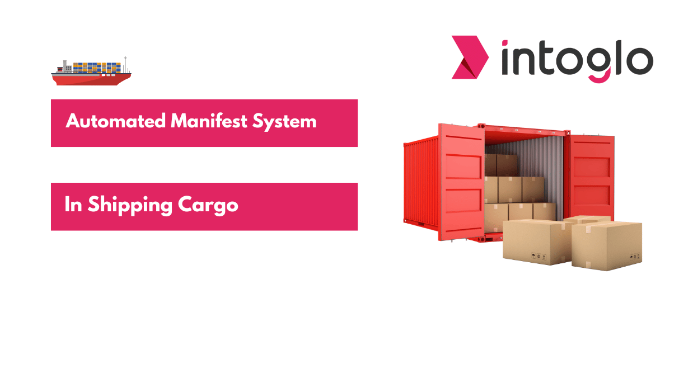
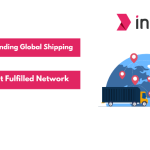

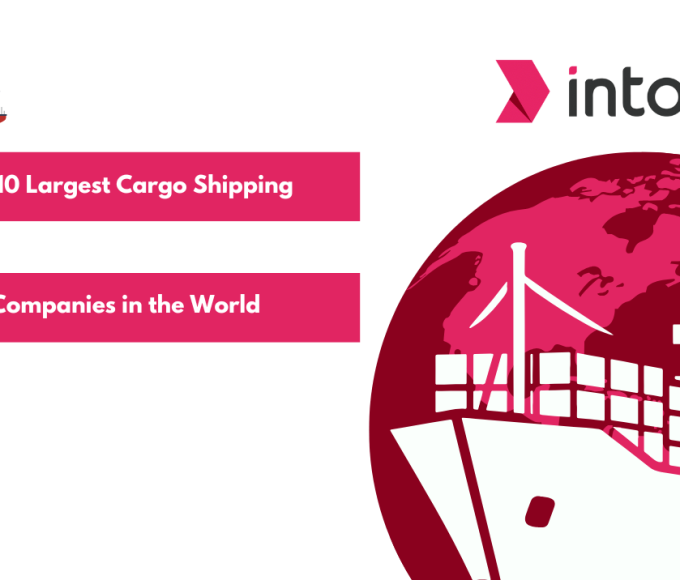

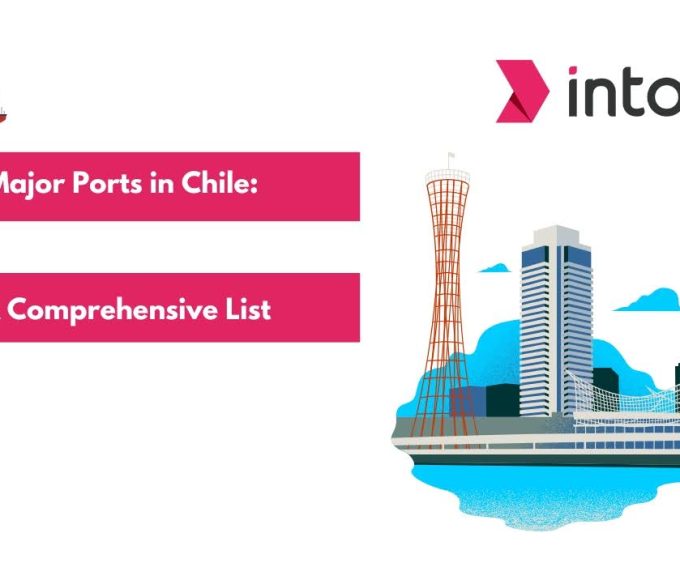
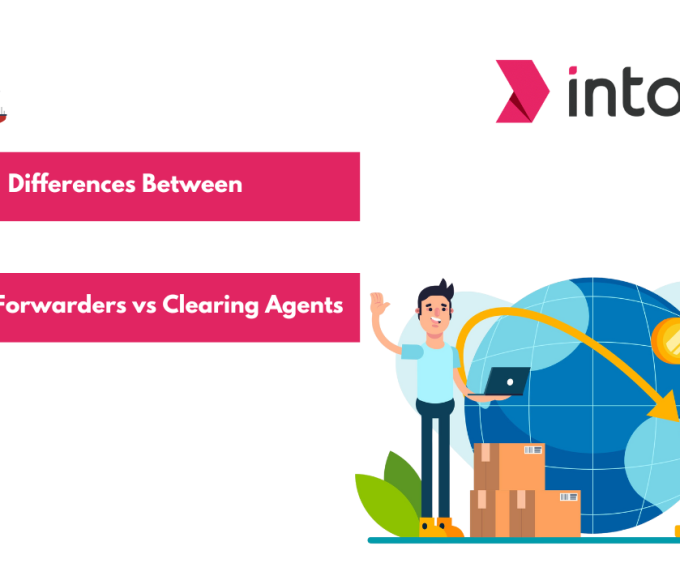
Leave a comment